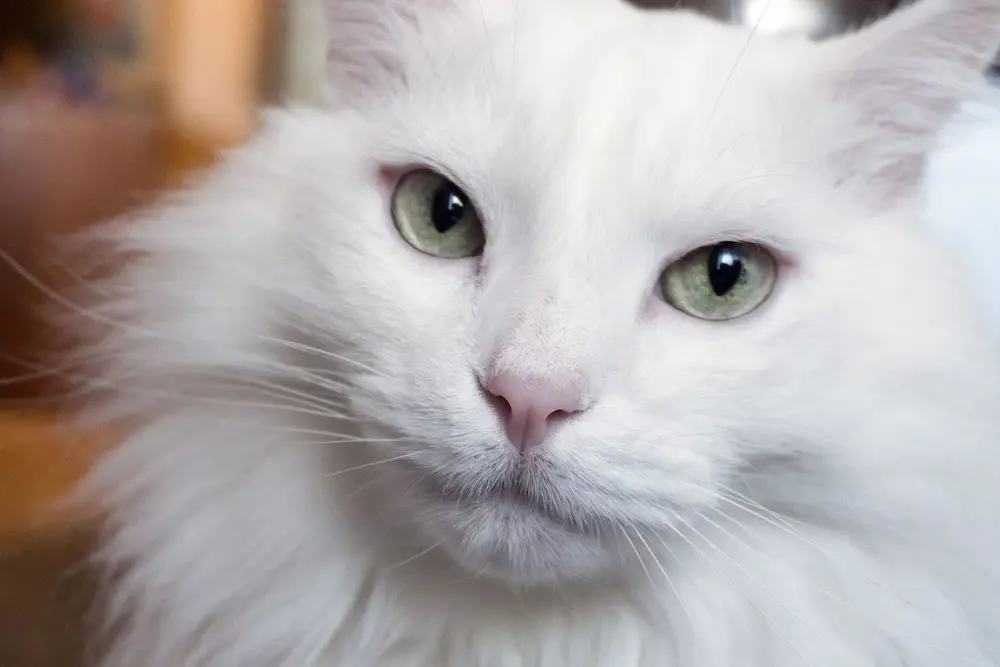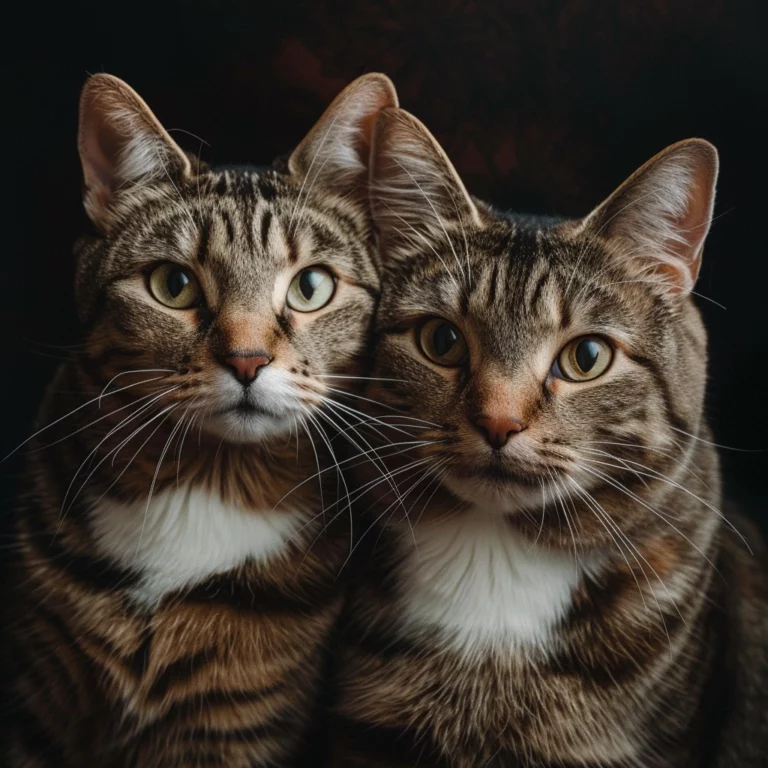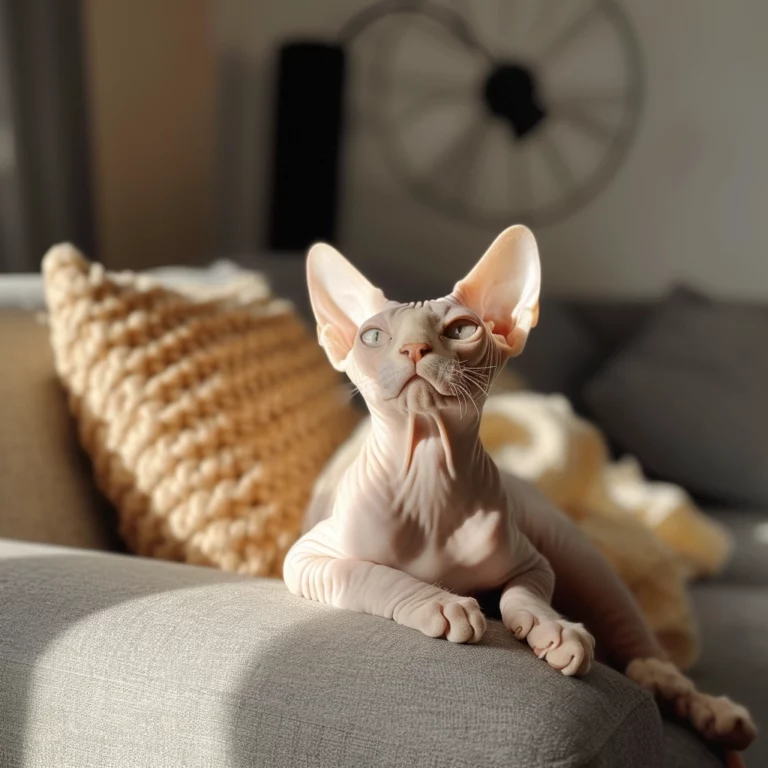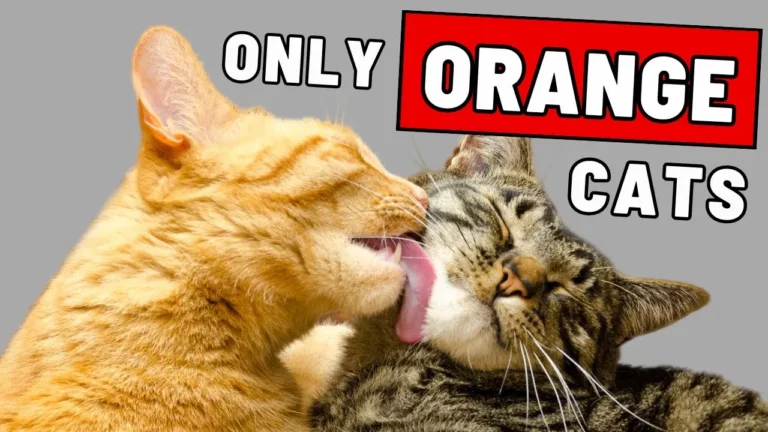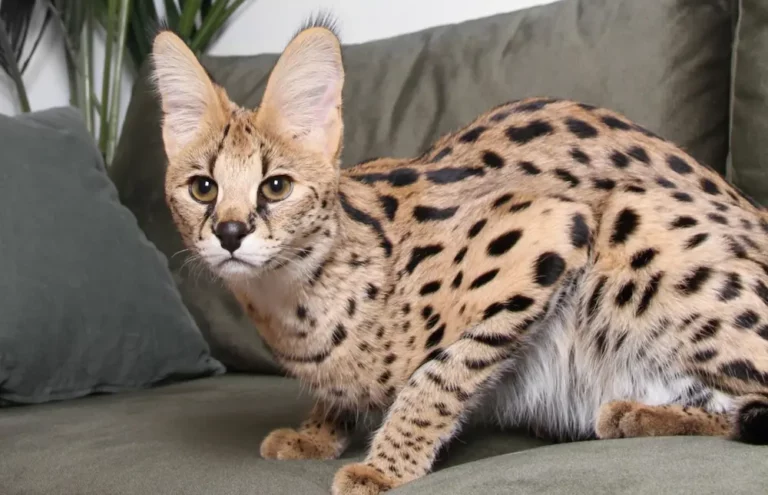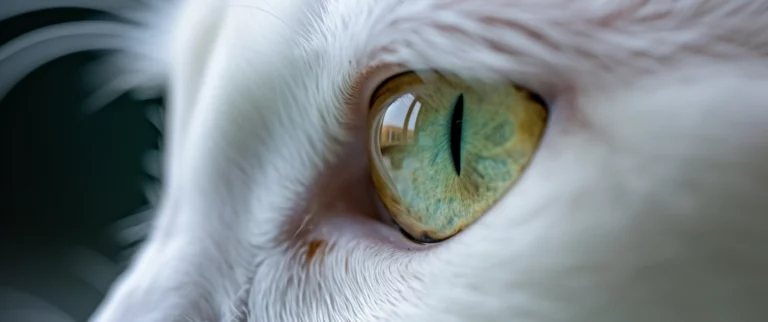Ultimate Turkish Angora Cat Guide: Care, History, & Fun Facts
Have you ever found yourself lost in the mesmerizing gaze of a Turkish Angora
These felines are not just a feast for the eyes; they’re a bundle of intelligence, affection, and history.
With their origins tracing back to the Ankara region of Turkey and a history that intertwines with royalty, the Turkish Angora is a breed that captivates both the heart and the mind.
But what sets them apart from other breeds, and how can you ensure your home is a haven for one?
In this guide, I’ll take you through the enchanting world of the Turkish Angora, from their distinctive characteristics and playful personality to their care needs that keep their silky coats gleaming.
Whether you’re a seasoned
Let’s unravel the allure of the Turkish Angora together, and discover why they’re more than just a pretty face.
Overview of the Turkish Angora Cat

Delving deeper into the graceful world of Turkish Angora cats, I’ve gathered information that highlights why these felines are so beloved.
With their historical roots deeply embedded in Turkey and their prominence among royalty, it’s clear these cats are special.
But, their appeal goes beyond just their storied past.
Here, I’ll share insights into their physical characteristics and temperament, providing a closer look at what makes these cats a fascinating addition to any home.
Physical Characteristics
My first encounter with a Turkish Angora left me in awe of their physical beauty.
With a slender, muscular build, they move with an elegance that’s hard to ignore.
Their most striking feature has to be their silky, medium-length coats which come in a variety of colors, including the rare lavender and chocolate.
Notably, Turkish Angoras lack an undercoat, which means less shedding and grooming compared to other long-haired breeds.
Their tails, resembling lavish plumes, complement their luxurious coats perfectly.
The almond-shaped eyes of a Turkish Angora can captivate anyone.
Shades of blue, green, amber, or even odd-eyed, where each eye is a different color, accentuate their expressive faces.
Considering these cats can weigh between 6 to 9 pounds, they have a surprisingly light, airy presence due to their fine-boned legs and long bodies.
Temperament and Personality Traits
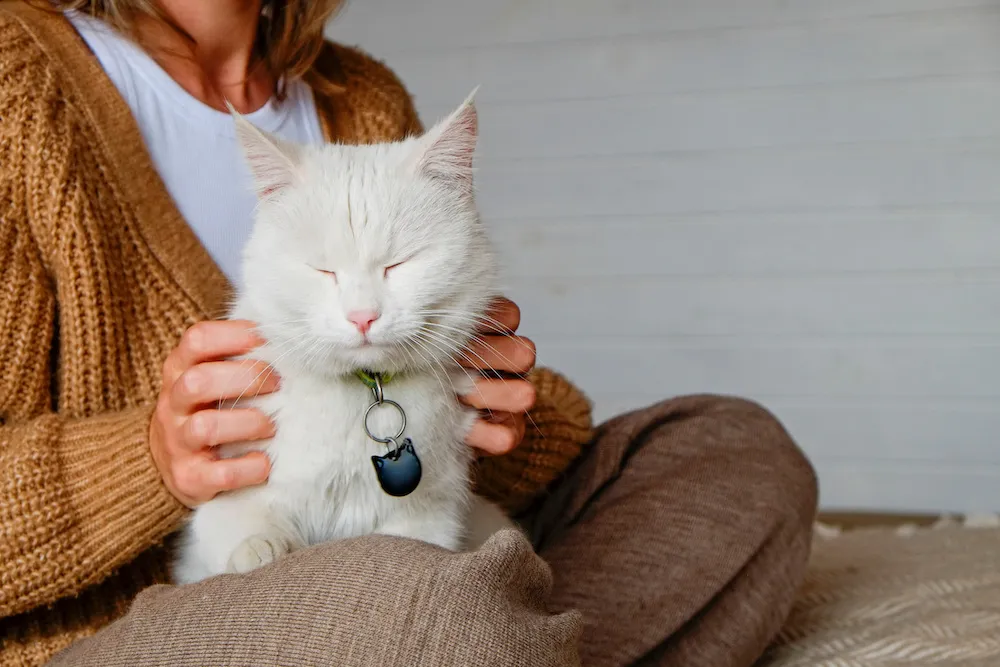
Beyond their stunning looks, Turkish Angoras are a bundle of joy thanks to their vibrant personalities.
During my time spent with these felines, I was constantly entertained by their intelligent, curious nature.
They’re not just pets; they’re companions who will follow you around, eager to be involved in whatever task is at hand.
I’ve noticed their playful side too.
These cats adore interactive games, and yes, they can learn to fetch!
Their fondness for water is another quirky trait—don’t be surprised to find your Turkish Angora wanting to join you for a bath.
This blend of athleticism and affection makes them ideal pets for families or individuals seeking an engaging feline friend.
Besides, Turkish Angoras possess an extroverted personality.
They’re not shy about greeting guests, often taking on the role of the “host” during gatherings in my home.
But, potential owners should be aware of their quick temperaments.
Even though this minor quirk, their devotion and loyalty to their humans are unmatched.
In essence, owning a Turkish Angora means embracing their need for affection and stimulation.
Regular playtime and interaction solidify the bond between
Their adaptability makes them fit well in homes with other pets, as long as introductions are handled with care.
Historical Background
Delving into the history and origins of the Turkish Angora cats, I’ve always found their journey quite fascinating.
I’m thrilled to share what I’ve learned about these elegant felines with you.
Origin and History
The Turkish Angora’s story begins centuries ago in the Ankara region of Turkey.
These cats developed their distinctive, medium-length fur coats as a natural adaptation to the region’s harsh climates.
It’s intriguing to think about how nature sculpted such elegance with a purpose.
Imagine the snowy landscapes of Ankara, and there, thriving in the cold, are the ancestors of our beloved Turkish Angoras.
By the 1600s, their refined beauty caught the attention of European nobles, thanks to Turkish sultans who gifted these exquisite cats, marking their introduction to the aristocracy.
There’s also speculation that they descended from the Manul
Fast forward to the 20th century, the Ankara Zoo began an official breeding program in 1917 to preserve the breed’s purity.
This effort underscores the significant cultural and historical value of Turkish Angoras, reflecting a dedicated try to maintain their lineage.
It’s a testament to the breed’s resilience and the profound appreciation the Turkish people have for these animals.
The Resurgence of the Purebred Turkish Angora
The turning point for Turkish Angoras came in the 1900s when the breed faced the threat of dilution.
This era marked a crucial period where Turkish Angoras could have easily blended into obscurity.
But, the intervention by the Turkish government and Ankara Zoo officials showcased a remarkable commitment to preserve its purity.
They began a meticulous breeding program, focusing especially on the iconic white Angoras with mesmerizing blue and amber eyes and the luxurious long, silky fur.
Their efforts were akin to curating a living museum of elegance, emphasizing cats with odd eyes, which were held in higher regard, believed to be blessed by Allah.
This selective breeding not only helped retain the breed’s physical characteristics but also amplified their mystique.
It’s a brilliant example of conservation that other countries could draw inspiration from.
As someone passionate about cats, I see great value in learning about the origins and historical efforts to preserve purebred animals like the Turkish Angora.
Their history isn’t just a tale of survival; it’s a narrative filled with cultural pride, natural beauty, and the enduring bond between humans and cats.
Hence, when considering a Turkish Angora as a companion, you’re not just adopting a pet; you’re embracing a piece of living history.
Identifying a Turkish Angora

In my journey of learning and sharing insights about cats, Turkish Angoras have always fascinated me with their majestic appearance and endearing personalities.
If you’re considering welcoming one of these elegant felines into your home or simply want to know more about them, understanding their unique characteristics is crucial.
Let’s investigate into what sets Turkish Angoras apart, focusing on their coat and color variations, head shape and build, and their distinctive tail and ear features.
Coat and Color Variations

Initially, I thought Turkish Angoras only flaunted pristine white coats, but I quickly learned that this breed boasts a rainbow of colors.
While the classic white Turkish Angora is iconic, they also come in chocolate, lavender, and cream, among others.
Some even have tabby or calico patterns, making each one uniquely beautiful.
What remains constant, but, is the texture of their coat.
It’s medium-long, silky, and surprisingly low maintenance.
Even though its luxurious look, a weekly brush through with a fine-toothed comb or slicker brush keeps their fur pristine.
Remember, the absence of an undercoat means fewer tangles but also a need for warmth during colder months.
Hence, a cozy cuddle or a warm spot in the sun is always appreciated by these graceful cats.
Head Shape and Build
When I first held a Turkish Angora, I was taken aback by the delicate structure of its body, especially its head.
These cats have small, round heads with a subtle, adorable “M” shaped mark on their foreheads if you look closely, particularly in tabbies.
Their skull shape, accompanied by fine-boned, elegant legs, lends to an overall appearance of delicate beauty. Yet, don’t be deceived; these cats are robust and agile.
Their muscle tone is excellent, supporting an athletic lifestyle.
They’re always ready for a quick game or an impromptu sprint across the room.
For potential owners, it means providing spaces where they can climb, jump, and explore is a must.
Tail and Ear Features
Perhaps one of the most striking features of the Turkish Angora is its tail.
Long, plush, and reminiscent of a luxurious fox tail, it’s an instant indicator of the breed.
It’s not just for show; it provides balance and aids in their remarkable agility.
Observing a Turkish Angora’s tail in motion is a spectacle in itself, especially when it fans out as they gracefully leap or turn.
Their ears, on the other hand, are large, wide-set, and alert, often embellished with tufts of fur sprouting from within.
These prominent features not only contribute to their acute hearing but also to their expressive nature.
A Turkish Angora’s ears, combined with large almond-shaped eyes that range in color from amber to green and even heterochromatic combinations, make their facial expressions utterly captivating.
Identifying a Turkish Angora goes beyond mere looks; it’s about recognizing and appreciating their unique blend of elegance, athleticism, and affectionate nature.
Whether you’re a seasoned
Bringing one into your home means a lifetime of joyful companionship and an endless fascination with their regal, yet playful, essence.
Care and Grooming

Caring for a Turkish Angora goes beyond their striking appearance.
It’s about maintaining their health and happiness through proper grooming and care.
Let me guide you through what you need to know to keep these elegant felines looking their best and living a long, joyful life.
Daily Grooming Requirements
Even though having medium to long silky coats, Turkish Angoras are surprisingly low maintenance, due in part to their lack of an undercoat.
But, this doesn’t mean grooming should be overlooked.
Regular brushing, about once or twice a week with a fine-toothed comb or slicker brush, is essential to prevent mats and tangles, especially in the longer fur of their ruff and tail.
During the shedding season, you might find it necessary to brush them more frequently, perhaps every other day, to help manage the loose fur.
One might think that such a plush coat requires professional attention, but in reality, consistent brushing at home does the trick.
Offering a comfortable lap and gentle strokes during grooming sessions turns this necessary task into a pleasurable bonding experience.
Also, keeping their nails trimmed and ears cleaned, along with regular dental care, promotes overall well-being and prevents common health issues.
Health Considerations and Preventative Care
A happy Turkish Angora is a healthy one.
Regular veterinary checks ensure they stay in prime condition.
Besides the standard care, it’s worth noting that Turkish Angoras can have specific genetic predispositions.
For example, deafness can be a concern, particularly in white-coated individuals with blue eyes.
Regular health screenings, hence, should include hearing tests for kittens to manage any potential challenges early on.
Preventative care also encompasses a balanced diet.
Opt for high-quality
Since Turkish Angoras are prone to obesity, especially after neutering or spaying, monitor their intake closely to avoid weight gain.
Besides, because of their intelligent and curious nature, mental health cannot be overlooked.
Engage them with interactive toys, training sessions, or even agility exercises to keep their minds sharp and prevent boredom.
It’s remarkable how a simple feather wand or puzzle feeder can enrich their day and strengthen the bond between us.
In essence, grooming and care for Turkish Angoras encompass both their physical and emotional needs.
A combination of regular grooming, dietary vigilance, preventative veterinary care, and mental stimulation not only ensures their coats stay silky and stunning but also that these affectionate companions lead full, happy lives.
Anticipating their needs and staying proactive in their care fosters a nurturing environment where our elegant friends can thrive.
Feeding a Turkish Angora
Nutritional Needs
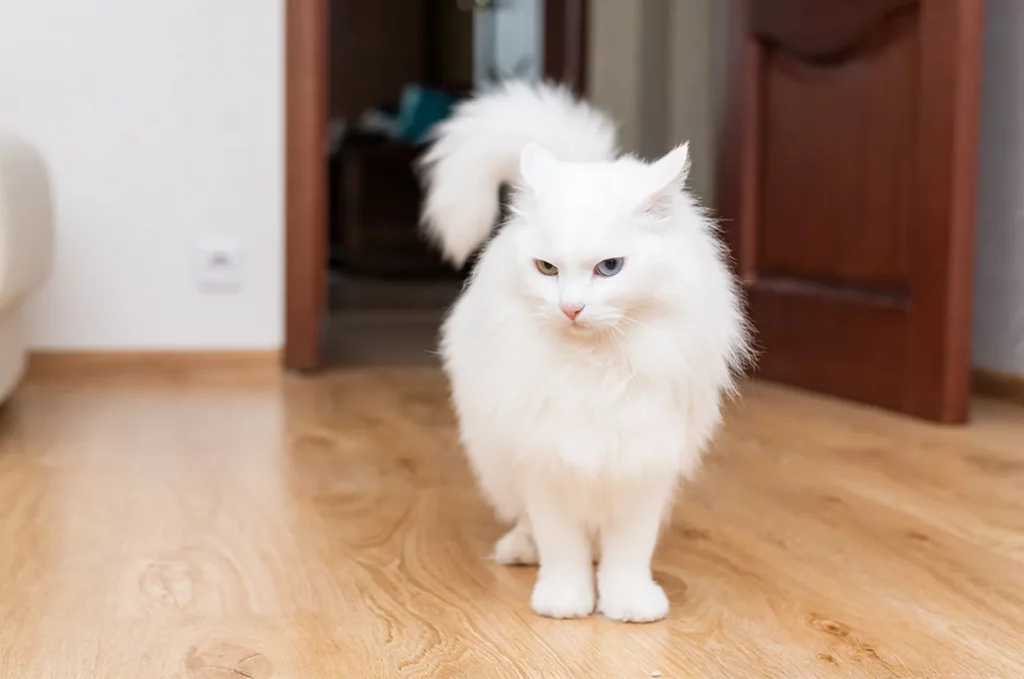
When it comes to Turkish Angoras, their nutritional needs aren’t a one-size-fits-all matter.
Just like humans, each
But, a high-quality commercial
For Turkish Angoras, a balanced diet rich in proteins and fats is essential to support their energy levels.
I’ve found that including foods with omega-3 fatty acids can help keep their luxurious coats shiny and healthy.
A kitten’s diet, bursting with calories and nutrients, will differ from that of an adult or senior Angora.
Kittens need more frequent feedings—three to four meals a day—while adults do well on two.
Incorporating wet food can aid hydration, particularly because some cats, Turkish Angoras included, might not drink enough water on their own.
Remember, though, each
Feeding Tips and Best Practices
Feeding a Turkish Angora isn’t just about what you feed, but also how and when.
Maintaining a routine can greatly benefit your
I’ve found that serving two meals a day at consistent times keeps my Turkish Angora content and eager for mealtime.
Puzzle feeders have become a personal favorite tool.
They not only serve to feed your Turkish Angora but also stimulate their minds, keeping them engaged and satiating their innate hunting instincts.
It’s crucial, but, to monitor the amount of treats given.
Treats should never make up more than 10% of your
Portion control is another critical aspect.
Overfeeding can lead to weight gain, which brings a host of health issues.
Measuring out food portions rather than free-feeding—leaving food out all day—helps avoid this.
Adjust these portions based on your
Transitioning food types or brands should be a gradual process over several days to minimize digestive upset.
Start with a ratio of around 25% new food to 75% old food, slowly increasing the new food proportion.
This method has always worked smoothly for me and my Turkish Angora.
Finally, ensuring fresh water is always available is paramount.
A little tip?
Some Turkish Angoras might enjoy drinking from a running water source, so consider a
Not only does it encourage them to drink more, but it also adds a bit of fun to their hydration habits.
Living with a Turkish Angora
Living with a Turkish Angora
From their historical significance to their dynamic personalities, Turkish Angoras make for compelling companions.
Let’s jump into the essential aspects of their environment and social needs to ensure they thrive in your care.
Environmental Needs
Creating an environment that caters to a Turkish Angora’s natural instincts is paramount.
Remember, these are cats that love to explore and have a history of royalty in their bloodlines.
Hence, your home should be their castle. Here are a few tips to meet their environmental needs:
- High Perches and Climbing Spaces: Turkish Angoras love to observe their kingdom from the highest vantage points. Investing in tall
cat trees or wall-mounted shelves not only satisfies their climbing instincts but also keeps them entertained and active. A window perch makes a perfect throne for them to gaze upon the outside world. - Interactive Toys: Given their intelligence, Turkish Angoras thrive on mental stimulation. Puzzle feeders, laser toys, and interactive electronic toys challenge their brains and keep boredom at bay. I’ve found that even a simple box can become a source of endless amusement for them.
- Safe Outdoor Access: If possible, providing safe, controlled access to the outdoors can significantly enrich their lives. A secure
cat patio (catio) or harness training for supervised outdoor adventures can offer them the joy of fresh air and sunshine while keeping them safe from predators and other dangers.
Interaction and Socialization
Turkish Angoras are not just pets; they’re family members who crave social interaction and form deep bonds with their humans.
Here’s how you can foster a strong, loving relationship with your Turkish Angora:
- Daily Playtime: Dedicate time each day for interactive play. It’s a fantastic way to bond and ensures they get ample physical exercise. Games that mimic hunting behaviors, like chasing feather wands or small balls, are incredibly satisfying for them.
- Training and Tricks: Don’t let their delicate appearance fool you; Turkish Angoras are highly intelligent and capable of learning a variety of commands and tricks. Use positive reinforcement techniques like treats and praise to teach them fun tricks or useful behaviors like coming when called.
- Companionship: These cats don’t like being left alone for long periods. If you have a busy lifestyle, consider having another pet for company. Turkish Angoras generally get along well with other animals, especially if they’ve been properly introduced and socialized from a young age.
- Respect Their Mood Swings: Even though their social nature, Turkish Angoras can have moments where they prefer solitude. It’s important to respect their space during these times. They’ll come seeking your attention when they’re ready for love and play again.
Special Considerations
When living with a Turkish Angora, there are a couple of special considerations to take into account.
I’ll guide you through understanding hereditary health issues specific to this breed and how they compare with similar breeds.
This way, you’ll be well-equipped to provide the best care for your furry friend.
Hereditary Health Issues
Turkish Angoras are generally healthy, but like all breeds, they’re prone to certain health conditions.
Hypertrophic cardiomyopathy (HCM), a common heart disease among cats, significantly affects this breed. It’s where the heart muscle abnormally thickens, potentially leading to serious heart problems.
Since HCM can be inherited, it’s crucial to ensure your pet comes from a breeder who conducts regular health screenings, especially cardiac evaluations.
If detected early, medications can manage HCM, thereby extending your
Another point to note is their susceptibility to blood clots, known as feline aortic thromboembolisms, which can be life-threatening.
Monitoring heart health closely becomes paramount.
Regular check-ups with a veterinarian can catch these issues early on, allowing for timely intervention.
Turkish Angoras may also be at risk for hereditary ataxia, a rare neurological condition seen in some kittens, affecting their coordination.
But, this condition is less common and should be manageable with the right care and attention.
Hence, when bringing a Turkish Angora into your home, making a commitment to regular veterinary visits is crucial for catching and managing these potential health issues.
Comparison with Similar Breeds
Turkish Angoras often get lumped together with other long-haired breeds, such as Persians or Maine Coons, due to their elegant coats.
But, they stand out in several significant ways.
Firstly, their energy level is much higher than that of the laid-back Persian.
An Angora is athletic, curious, and playful, enjoying interactive play with their humans or other pets in the home.
They’re also considerably lighter and have a more slender build compared to the robust Maine Coon.
In terms of grooming, the Turkish Angora’s coat is easier to manage due to its single layer that’s less prone to matting, unlike the Persian’s dense double coat that requires daily attention.
But, that doesn’t mean Angoras don’t enjoy a good brushing session — it’s a great way for you to bond!
Their health profiles also differ.
While all three breeds can experience HCM, Turkish Angoras do not typically face the brachycephalic (shortened head) related issues common in Persians or the specific spinal muscular atrophy seen in Maine Coons.
Besides, Turkish Angoras have a unique fondness for water unlike most cats, making bath time potentially less stressful if you get them accustomed from a young age.
Fun Facts About Turkish Angora Cats
Exploring through the fluffy world of felines, Turkish Angora cats stand out for their majestic looks and royal history.
But, there’s so much more to these elegant creatures than meets the eye.
Allow me to share some intriguing fun facts that add to their allure.
First off, let’s talk about their origin.
Did you know that Turkish Angoras aren’t just from Turkey?
That’s right.
While they hail from the Ankara region, historically known as Angora, their breed’s presence was documented in France as early as the 1600s.
This adds a layer of European flair to their exotic history.
Besides, Ankara Zoo has been their breeding haven since 1917, ensuring the breed’s purity and continuation.
This makes me appreciate the diligent efforts taken to preserve this breed’s legacy.
Onto their striking appearance, which often leaves people in awe.
Turkish Angoras are a vision with their silky, medium-length coats that feel as soft as clouds.
But here’s a kicker – they come in various colors, including some you might not expect, like lavender and chocolate.
Imagine the surprise on a guest’s face when they see a chocolate or lavender furball gracefully strutting around your living room!
Their unique eye colors are another aspect that defines their exotic looks.
Be it blue, green, amber, or even odd-eyed, each pair tells a story of genetic marvel.
I find the odd-eyed Turkish Angoras particularly fascinating.
It’s as if they’re carrying the mystical depth of the universe in their gaze, making them not just pets, but living art.
Personality-wise, they’re equally captivating.
These cats are athletic, intelligent, and surprisingly fond of water.
Frequently Asked Questions
What are the cons of Turkish Angoras?
Turkish Angoras have long, fine coats that require regular grooming to prevent matting.
They also have high exercise requirements, needing plenty of physical and mental stimulation due to their active nature.
Is Turkish Angora a lap cat ?
Turkish Angoras are affectionate and enjoy human contact, but they are not typical lap cats.
They can be quite demanding of attention and prefer to be close to their owners, often acting as a faithful shadow.
Are Turkish Angora cats clingy?
Yes, Turkish Angora cats can be considered clingy.
They have a friendly and sociable personality, thriving in environments where they receive constant love and attention.
They tend to not like being left alone and appreciate having company, whether it’s their owner or other pets.
Are Turkish Angora cats easy to take care of?
Turkish Angora cats are relatively easy to groom despite their semi-long coats, which don’t easily mat or tangle.
A weekly brush or comb is sufficient to keep their coats shiny and healthy.
They do experience shedding, especially when transitioning from winter to summer.
What is the lifespan of a Turkish Angora cat ?
The lifespan of a Turkish Angora
Proper care, including tailored nutrition, regular grooming, and health monitoring, can help ensure they live a long and happy life.
Conclusion
Adopting a Turkish Angora
Their elegant appearance, paired with a playful and affectionate nature, makes them a unique companion.
I’ve shared insights on their care, from diet to grooming, and highlighted the importance of understanding their health needs to ensure a happy, healthy life together.
Remember, each
If you’re considering adding a Turkish Angora to your family, you’re in for a delightful journey filled with love, fun, and maybe even a few splashy bath times.
Here’s to the joy and adventure that awaits with these beautiful, spirited felines!
